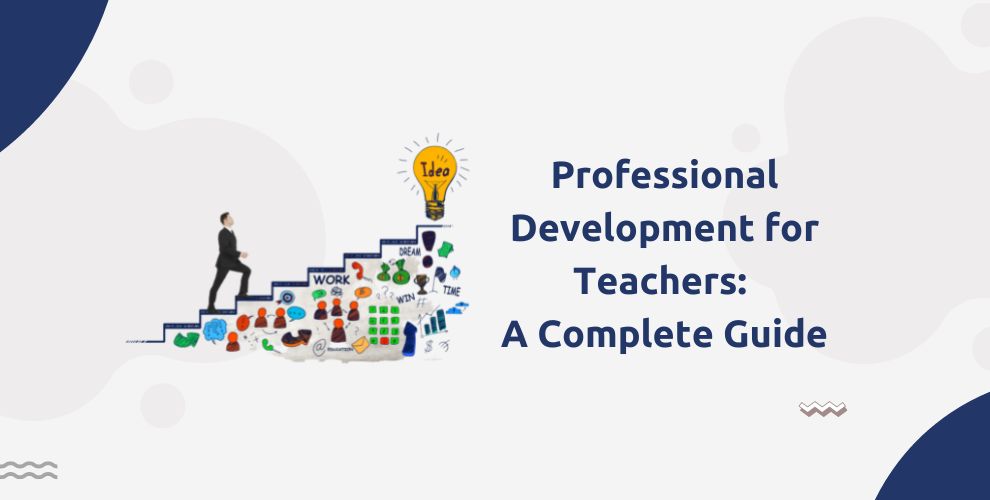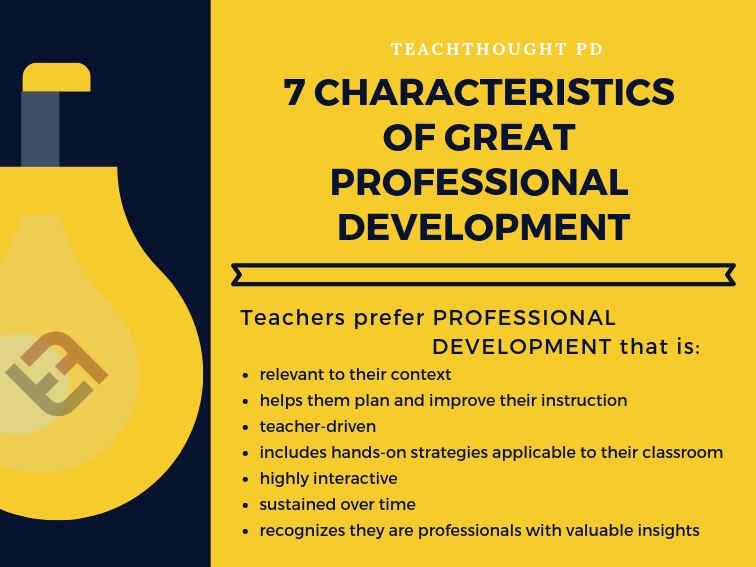Teaching is an evolving profession that requires continuous learning and adaptation. As education systems shift to accommodate new technologies, teaching methodologies, and student needs, professional development for teachers becomes essential. Ongoing training and skill enhancement ensure that educators remain effective, engaged, and equipped with the latest strategies to foster student success.
This article explores the importance of professional development for teachers, its key components, benefits, challenges, and best practices to promote continuous improvement in education.
What is Professional Development for Teachers?

Professional development (PD) refers to ongoing training, education, and skill-building opportunities that help teachers enhance their teaching abilities and stay up-to-date with advancements in education. It can take various forms, including:
- Workshops and Seminars – Training sessions on new teaching methods, technology, or classroom management strategies.
- Online Courses and Certifications – Self-paced or instructor-led courses covering specialized topics.
- Peer Collaboration and Mentoring – Sharing experiences and best practices with colleagues.
- Educational Conferences – Attending national or international events to gain insights from experts.
- Action Research and Reflective Teaching – Conducting personal research to improve teaching techniques.
Professional development is not just a requirement; it is a continuous process that enables teachers to grow, adapt, and improve throughout their careers.
Why is Professional Development Important for Teachers?
Teaching is more than just delivering lessons—it’s about understanding students, using effective methods, and adapting to changing educational landscapes. Here’s why professional development is essential:
A. Keeping Up with Educational Trends
Education is constantly evolving due to new research, technology, and policy changes. Professional development helps teachers stay updated on:
- Innovative teaching strategies (e.g., flipped classrooms, project-based learning)
- Technology integration (e.g., digital classrooms, AI tools)
- Diversity and inclusion (e.g., culturally responsive teaching)
B. Enhancing Teaching Effectiveness
Through PD, teachers learn new strategies to engage students, differentiate instruction, and assess learning outcomes more effectively. This leads to improved student performance and engagement.
C. Supporting Student-Centered Learning
PD encourages personalized learning approaches, helping teachers address diverse student needs. This includes:
- Differentiated instruction for varied learning styles.
- Techniques for supporting students with disabilities.
- Social-emotional learning (SEL) strategies.
D. Increasing Teacher Confidence and Job Satisfaction
Continuous learning enhances teachers’ confidence, making them feel more prepared, competent, and motivated in their roles. Teachers who invest in professional growth are also more likely to stay in the profession, reducing burnout and attrition rates.
E. Strengthening School Communities
When teachers engage in professional development together, it fosters collaboration, knowledge-sharing, and a strong professional culture within schools. This improves teamwork, curriculum planning, and overall school performance.
Key Components of Effective Professional Development
For professional development to be truly impactful, it should be meaningful, practical, and aligned with teaching goals. The following elements contribute to effective PD:
A. Active Learning
Traditional sit-and-listen workshops have limited impact. Instead, PD should include interactive components such as:
- Hands-on activities
- Collaborative problem-solving
- Simulations and role-playing
- Case study discussions
B. Ongoing and Sustained Learning
One-time training sessions are not enough. Effective PD should be continuous and long-term, incorporating follow-ups, coaching, and peer collaboration to ensure lasting improvement.
C. Data-Driven Decision Making
Teachers should use student performance data to identify areas for improvement and tailor professional development goals accordingly.
Example: If data shows low student engagement in science lessons, teachers can seek training in inquiry-based learning or STEM instructional strategies.
D. Collaboration and Peer Learning
Peer-driven learning is one of the most effective ways to enhance teaching practices. Teachers should have opportunities to:
- Observe each other’s classrooms.
- Share successful strategies.
- Engage in team-based professional learning communities (PLCs).
E. Personalization and Choice
Teachers have different needs and interests. Schools should offer flexible PD options so educators can focus on areas relevant to their professional growth.
Example: A new teacher might need training in classroom management, while a veteran teacher may seek professional development in education leadership.
F. Use of Technology
Technology is transforming education, and PD should incorporate:
- Online learning platforms (e.g., Coursera, EdX, Google for Education)
- Webinars and virtual conferences
- Artificial Intelligence (AI) tools for education
This ensures teachers become digitally literate and can integrate tech tools into their classrooms effectively.
Types of Professional Development for Teachers
Professional development comes in many forms, depending on the needs of teachers and schools. Here are some of the most common types:
A. Workshops and In-Service Training
Schools regularly host PD workshops on topics such as classroom management, student engagement, and assessment strategies.
B. Online Courses and Webinars
Teachers can access self-paced learning through platforms like:
- Coursera
- Udemy
- EdX
- Khan Academy for Teachers
Webinars offer flexibility, allowing teachers to learn anytime, anywhere.
C. Teacher Coaching and Mentorship
New teachers benefit from mentorship programs, where experienced educators guide them through classroom challenges.
Coaching provides individualized feedback and helps teachers refine their instructional techniques.
D. Professional Learning Communities (PLCs)
PLCs are collaborative teacher groups that focus on:
- Sharing lesson plans and teaching strategies.
- Analyzing student progress.
- Problem-solving classroom challenges.
E. Attending Educational Conferences
Teachers can gain global insights by attending conferences such as:
- ISTE (International Society for Technology in Education)
- ASCD (Association for Supervision and Curriculum Development)
- EdTech Conferences
F. Graduate Programs and Certifications
Some teachers pursue advanced degrees or certifications (e.g., a Master’s in Education, Google Certified Educator) to expand their expertise.
Challenges in Implementing Professional Development
Despite its benefits, professional development faces several challenges:
A. Lack of Time
Teachers have packed schedules, making it difficult to attend workshops or complete training programs.
B. Limited Funding
Some schools struggle with budget constraints, limiting access to high-quality training programs.
C. One-Size-Fits-All Approach
Generic PD sessions fail to address individual teacher needs, making them less effective.
D. Resistance to Change
Some teachers may be reluctant to adopt new teaching strategies, especially if they feel overwhelmed by constant educational reforms.
E. Ineffective Training Methods
Poorly designed PD programs with theoretical content but no practical application do not lead to meaningful improvements.
Best Practices for Schools to Improve Professional Development
To make PD more effective, schools should:
- Prioritize teacher input – Involve educators in designing PD programs based on their needs.
- Provide ongoing support – Offer coaching, mentoring, and continuous learning opportunities.
- Encourage collaboration – Create teacher networks where they can learn from each other.
- Leverage technology – Use online platforms to make PD accessible and engaging.
- Measure impact – Track student progress and teacher growth to assess the effectiveness of PD initiatives.
The Future of Professional Development
With advances in AI, virtual reality, and data-driven education, professional development is becoming more personalized and innovative. Future trends include:
- Microlearning – Short, focused training sessions accessible via mobile devices.
- AI-driven learning analytics – Customizing PD based on teacher performance data.
- Gamification – Making PD more interactive through game-based learning.
As education evolves, so will the way teachers learn and grow in their profession.
Conclusion
Professional development is the key to continuous improvement in teaching. By staying updated on educational trends, integrating technology, and engaging in lifelong learning, teachers can enhance their effectiveness and positively impact student success.
Schools must invest in meaningful, personalized, and ongoing PD programs to ensure teachers are well-equipped to handle the challenges of modern education. When educators grow, students thrive—making professional development a crucial element in shaping the future of learning. 📚🚀



